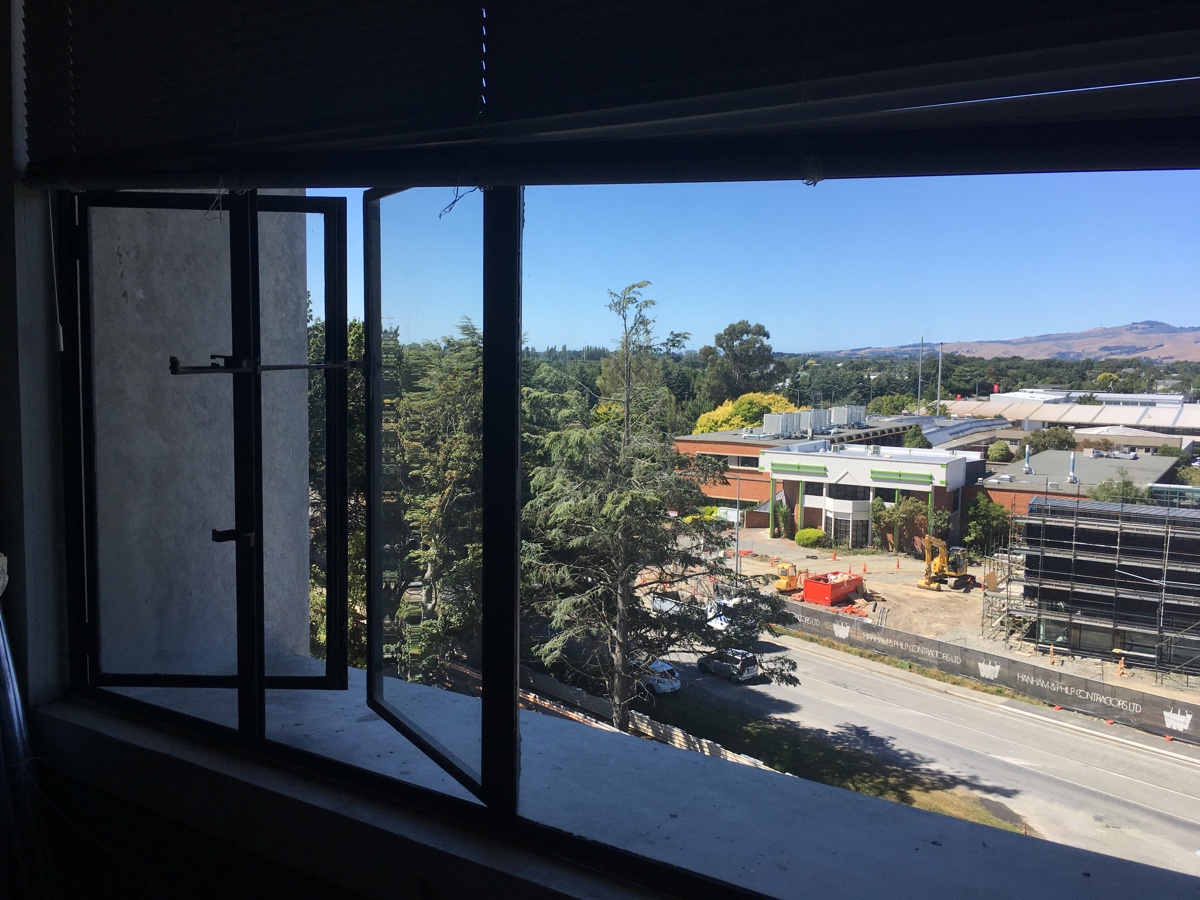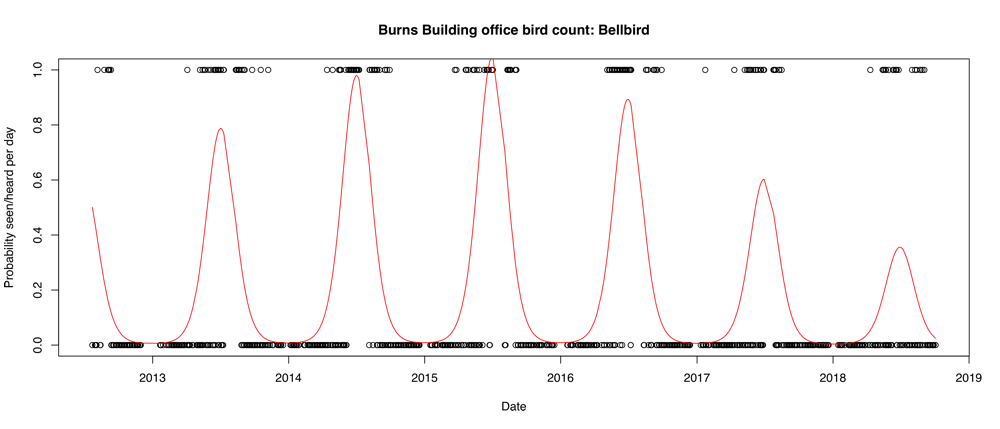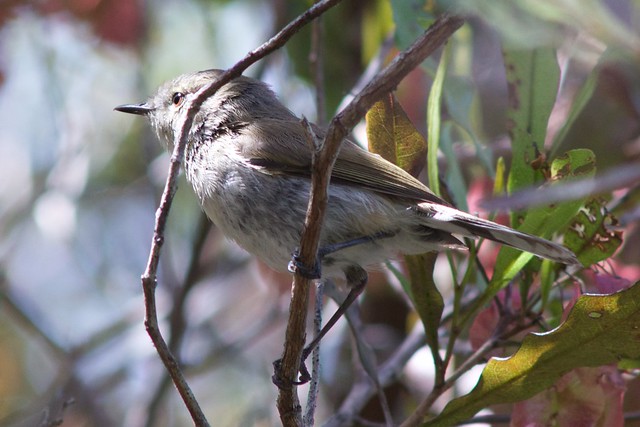RECENT ARTICLES
- CEBRA: An optimised and standardised sampling protocol for BioBlitz
- Stop it people, the plural of anecdote IS data!
- That's no pollinator, that's a flower visitor
- Add a scale to your macro photos
- What to photograph when counting the wild
- Imagine counting the wild on EVERY street in a city!
- My wild counting workflow
- A butterfly flew through
- Why iNaturalist observations without photos can be research grade
- Why you shouldn’t use a spreadsheet for data entry
- All articles ...
Seven years of bird counting, from my office
Wild counting is as simple as opening the office window.
written Jun 2, 2018 • by Jon Sullivan • Category: Wild Changes


Some long-term monitoring of nature can be quick and easy, but good habits are hard to start. Despite my interest in monitoring, it wasn’t until eight years after I joined the staff at Lincoln University, New Zealand, that I started monitoring from my office. After that slow start, I’ve been consistently noting down native forest birds, butterflies, and cicada calls. It’s simple, easy, and has revealed surprising changes in the local species that everyone would otherwise have overlooked. That’s good monitoring in a nutshell: simple, easy, and reveals surprises.
I crack my window open and use my 5 in 20 minute method, recording the presence/absence, or minimum and maximum number, of each of my focal species seen or heard every 20 minutes. I separate off the observations made in the first five minutes of each interval. That allows for comparison with NZ five-minute bird count datasets. (See the example below.)
For birds, I’ve been noting just the native forest species that were present in NZ before people. These are a good indicator of our progress towards towns and farms becoming more suitable for NZ’s original species. All these birds are currently rare to absent from most of the wider Lincoln landscape. That makes most of my counts zeros, which is why they’re so easy to count.
The only important trick to my office counting is to separate the things I see first from those I only hear or hear first. I don’t want the time I spend gazing out the window influencing my long-term trends. Most of my time I’m looking at a computer screen or at students and colleagues. However, a bird singing or cicada calling can always be noted.
Below is an example, from part of my day at work on 20 August 2014. winoa means that my window was open. The pipe, |, indicates whether an observation was before or after the first five minutes of a 20 minute interval. In my shorthand, bellb is bellbird, gw is grey warbler, and ft is fantail. As you can see, it’s all simple and easy to do.
/14:00- [winoa]
/14:20- [winoa]
/14:40- [winoa]
/15:00- [winoa]
/15:20- [winoa]
bellb song |yes
/15:40- [winoa]
/16:00- [winoa]
gw song yes|
/16:20- [winoa]
/16:40- [winoa]
ft song |yes
/17:00- [winoa]
ft song yes|
/-17:05
After seven years of office counting, I can now reveal the seasonal and long-term changes in native forest birds from the Lincoln University’s Burns building. There’s quite a lot going on, much more than I’d noticed while making the counts.
First, it’s worth mentioning the elephant-shaped hole in the room: there have been very few native forest birds around the Burns building. I’ve got counts here from 986 days and on 80% of the days, I saw and heard no native forest birds. I’ve never heard or seen a kererū (NZ wood pigeon), karearea (NZ falcon), or tūī (kōkō). Those are very rarely reported passing through Lincoln. The birds I did sometimes record were the three most adaptable of the landscape’s native forest birds: fantails (piwakawaka), grey warblers (riroriro), and bellbirds (korimako). Probably not coincidentally, all three have close relatives in Australia that can cope with open woodland habitats and mammalian predators.
I observed all three much more frequently in the winter months than in summer. Bellbirds only visit Lincoln in the winter months, mostly lone males travelling out from various forested parts of the Christchurch Port Hills. (I can tell they’re from the Port Hills by the dialects of their songs.)
My bellbird encounters in Lincoln got steadily more frequent over the first four years, but then declined again afterwards. I was 3.6 times more likely to have heard a bellbird from my office in June 2016 than in June 2012. I expect that had much more to do with the forest succession and predator control happening in the Port Hills than any recent changes at Lincoln.
In the last three years, my bellbird encounters halved. At the same time, the adjacent building was demolished, after being damaged in the earthquakes, and then almost all of the big old trees within 100 m were felled to prepare the land for a replacement building. That is likely at least partially responsible for the recent decline.


Unlike bellbirds, fantails are resident in Lincoln with some birds successfully breeding here. The seasonal effect on fantail numbers is much weaker than for bellbirds. The overall trend is similar to the bellbirds with fantail numbers gradually increasing over the first four years before decreasing in recent years. Again, I expect this is a local effect of the tree removal around the building rather than a campus-wide effect.


Grey warblers, while sharing the same winter-peaking seasonality as bellbirds, have been in steady decline around the Burns building for the past seven years. I hear them only about 15% as often now as I did seven years ago. Despite this large decline, I had not noticed that there had been any decline until I graphed my counts. Human brains are shockingly bad at noticing gradual trends.


So, with three birds there were three different trends: bellbirds only present in the winter months and rising then falling, fantails with a weak seasonal trend and rising then falling, and grey warblers steadily declining. At this stage, I have not curated and analysed enough of my other Lincoln counts to know if these trends are consistent across Lincoln town. There has definitely been a local decline in recent years associated with the felling of most nearby large trees. However, there was already a significant declining trend in grey warblers before the tree felling. Like most long-term monitoring, these trends raise more questions than they answer.
Despite how easy it was to make these observations, I’m not aware of any other datasets that reveal what’s been happening with these birds in Lincoln. That is, besides other counts I’ve done myself and with students (those still need a fair amount of curation before they’ll be ready for analysis). There’s no official long-term monitoring of terrestrial biodiversity in Lincoln. That’s despite Lincoln marketing itself as an Envirotown and being the location of a university and several government research institutes.
If Lincoln doesn’t monitor its nature, it’s no real surprise that there’s little to no long-term monitoring in most towns and cities in New Zealand, or the world. As I hope I’ve shown here, it really doesn’t need to be this way. Some long-term monitoring is as simple as opening your office window and listening. So what are you waiting for?
Postscript: My office counts are likely to come to an abrupt halt sometime soon when the Burns building is demolished. I’ll be shifted into a new air conditioned open plan area of the modern replacement building. Still, monitoring never dies. Anytime in the future someone can sit outside the site of the new building for 20 minutes and compare what they see and hear to my seven years of recording. I expect they’ll again be surprised by how much things have changed.